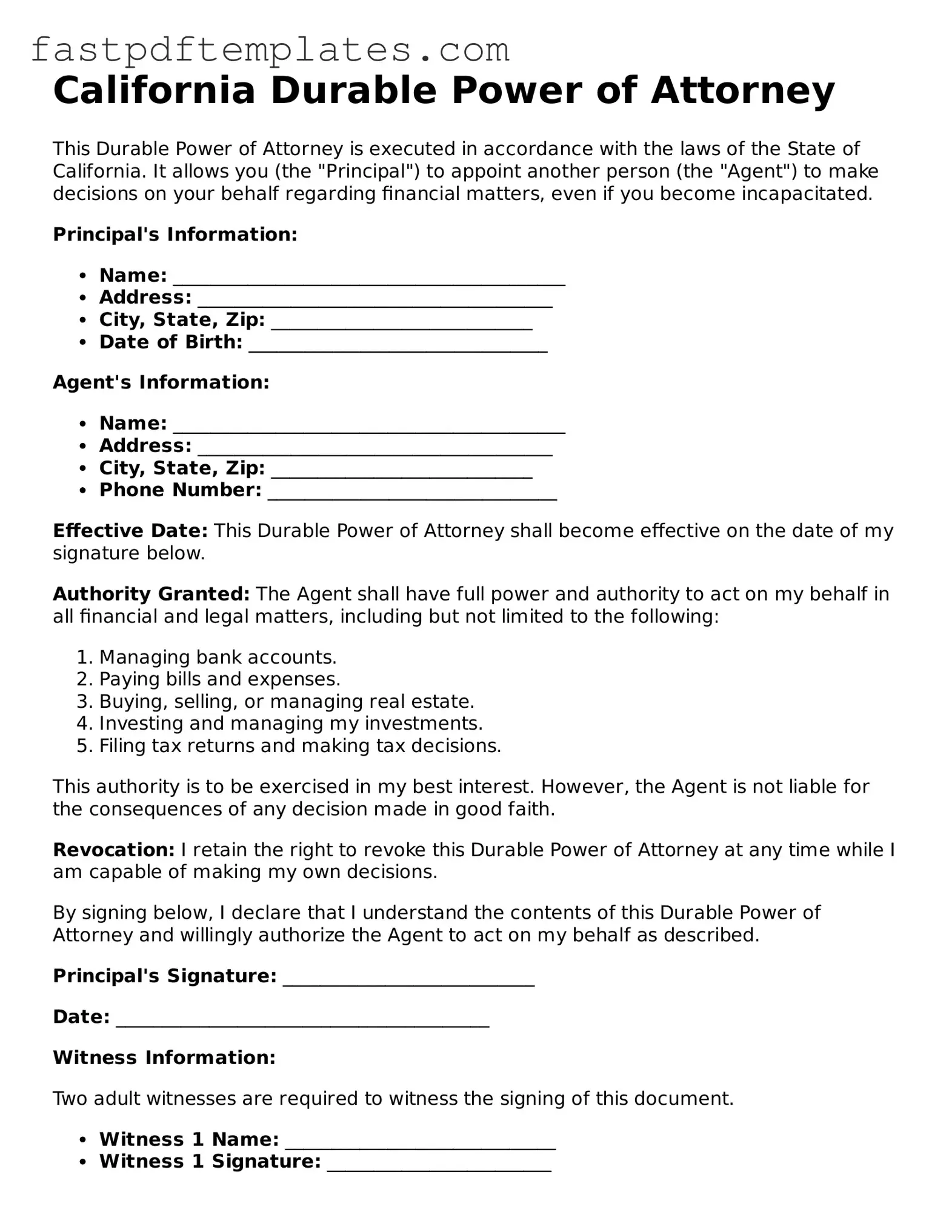California Durable Power of Attorney
This Durable Power of Attorney is executed in accordance with the laws of the State of California. It allows you (the "Principal") to appoint another person (the "Agent") to make decisions on your behalf regarding financial matters, even if you become incapacitated.
Principal's Information:
- Name: __________________________________________
- Address: ______________________________________
- City, State, Zip: ____________________________
- Date of Birth: ________________________________
Agent's Information:
- Name: __________________________________________
- Address: ______________________________________
- City, State, Zip: ____________________________
- Phone Number: _______________________________
Effective Date: This Durable Power of Attorney shall become effective on the date of my signature below.
Authority Granted: The Agent shall have full power and authority to act on my behalf in all financial and legal matters, including but not limited to the following:
- Managing bank accounts.
- Paying bills and expenses.
- Buying, selling, or managing real estate.
- Investing and managing my investments.
- Filing tax returns and making tax decisions.
This authority is to be exercised in my best interest. However, the Agent is not liable for the consequences of any decision made in good faith.
Revocation: I retain the right to revoke this Durable Power of Attorney at any time while I am capable of making my own decisions.
By signing below, I declare that I understand the contents of this Durable Power of Attorney and willingly authorize the Agent to act on my behalf as described.
Principal's Signature: ___________________________
Date: ________________________________________
Witness Information:
Two adult witnesses are required to witness the signing of this document.
- Witness 1 Name: _____________________________
- Witness 1 Signature: ________________________
- Date: _____________________________________
- Witness 2 Name: _____________________________
- Witness 2 Signature: ________________________
- Date: _____________________________________
Notarization is recommended to ensure the validity of this document.
